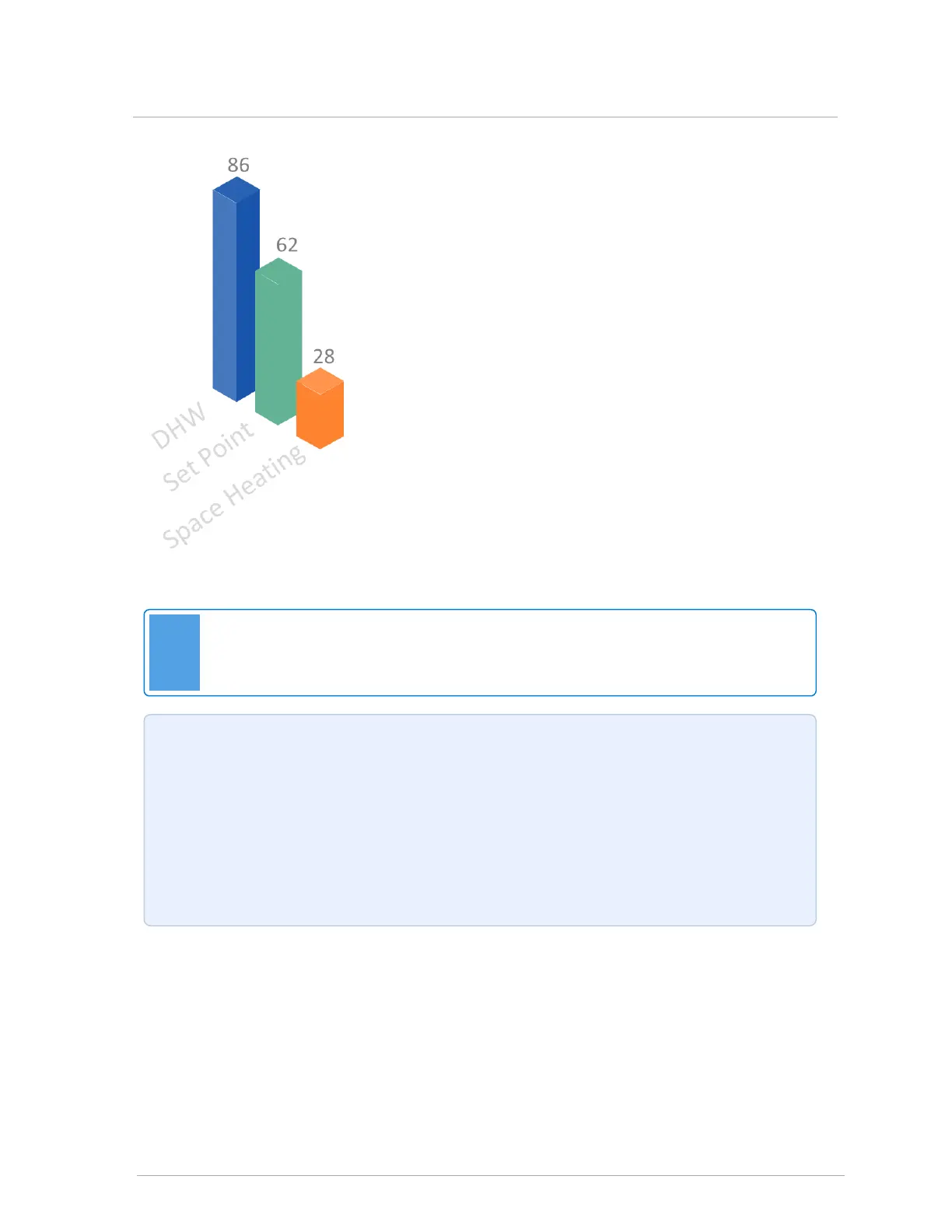If using Setup, load priority is simplified with options "very low",
"low", "high" or "very high". There's more precision in Advanced
Setup, where you can enter numeric values between 20 and 90 for
a priority load. Note: The priority value has to be different for each
load, but the priority scale values do not need to add up to 100 –
they are relative only to each other. A higher numerical value
means a higher priority.
Consider priority values as minutes. The difference between two
load priority values is the number of minutes the higher priority
load will operate before switching back to the lower priority load.
For example, if DHW has a priority of 86 and the Set Point load
has a priority of 62, the DHW load will run for (86-62) 24 minutes
before switching to the simultaneously calling Set Point load.
Following the initial cycle, the competing loads will switch back
and forth after a further 10-minute interval pending satisfaction of
one or both loads.
Figure 10 Default priority values by load type in Installer Settings
Note
Ensure that loads are set with a minimum of 15-minute differential between competing
loads.
Example: If baseboards (set up with Reset Heating as Load 3) are not providing the desired
heat, you can bring on baseboard run time sooner by increasing the priority value relative to the
other declared loads (e.g., changing the Load 3 preset value from 43 to 50 or reducing another
load’s value). Temperature targets for the under-served load can also be raised, in this
example.
To cause repeated unequal run times; for example, constant 35 vs 5-minute runs, you need to
integrate an external load removing relay or timer on one of the heat calls. Do not set each load
to the top value, and avoid equal ratings.
2.6 Setting load priority
